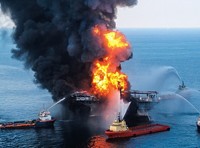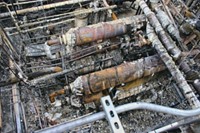Advertisement
Grab your lab coat. Let's get started
Welcome!
Welcome!
Create an account below to get 6 C&EN articles per month, receive newsletters and more - all free.
It seems this is your first time logging in online. Please enter the following information to continue.
As an ACS member you automatically get access to this site. All we need is few more details to create your reading experience.
Not you? Sign in with a different account.
Not you? Sign in with a different account.
ERROR 1
ERROR 1
ERROR 2
ERROR 2
ERROR 2
ERROR 2
ERROR 2
Password and Confirm password must match.
If you have an ACS member number, please enter it here so we can link this account to your membership. (optional)
ERROR 2
ACS values your privacy. By submitting your information, you are gaining access to C&EN and subscribing to our weekly newsletter. We use the information you provide to make your reading experience better, and we will never sell your data to third party members.
Industrial Safety
Welding at oil terminal caused worker injuries, investigators say
US Chemical Safety Board finalizes report on 2016 fire and explosion
by Jeff Johnson, special to C&EN
October 3, 2022

Company and contractor errors led to a 2016 fire and explosion that injured seven workers at a Texas crude oil terminal, federal investigators say. These conclusions are in a final report on the incident at the Sunoco Nederland oil terminal that the US Chemical Safety and Hazard Investigation Board (CSB) released Sept. 28.
The explosion occurred when L-Con Inc., a Sunoco contractor, was welding a pipe segment that held residual crude oil. The oil caught fire, over-pressurized the pipe, and blew out isolation devices installed at the pipe ends. This ejected burning oil and the isolation device remnants from both ends of the pipe and injured the workers, according to the report.
Both Sunoco and L-Con had developed procedures to provide employees with guidance on how to safely conduct hot work operations, the report says. But the CSB found that guidance was inadequate because regulations do not allow hot work on equipment containing flammable material.
Specifically, the investigation found that the pipe involved in the incident contained residual flammable crude oil which was not adequately cleaned or made inert.
CSB acting executive Steven Owens notes the board’s long history of investigating hot work incidents and that they are “well-understood events and avoidable.” He and lead investigator Lauren Johnson add that much information on ways to avoid hot work fires and explosions is available to chemical- and oil-related industries but is often not followed.
Guidance is available through the federal Occupational Safety and Health Administration’s and National Fire Protection Association’s recommendations as well as CSB’s hot work bulletin, the safety board points out.
The conclusions of the incident investigation apply to some 1,400 similar US oil terminals as well as many refineries and manufacturers that engage in hot work.
The CSB termed its report a “limited scope investigation” to identify hot work safety issues. Such a report involves a limited number of safety issues including operating procedures, maintenance, or work practices, CSB said in a statement.
The 2016 incident was the longest stalled report among CSB’s docket of 18 incomplete investigation reports. But it was also the second report CSB issued in the last two months, says board member Sylvia Johnson. She cited an increased effort by CSB to get safety lessons out to workers and companies.




Join the conversation
Contact the reporter
Submit a Letter to the Editor for publication
Engage with us on Twitter